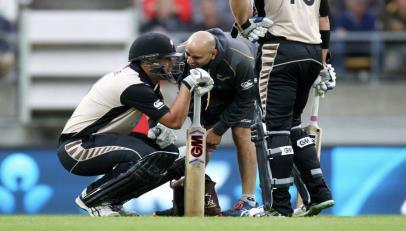
3 minute read
Physiotherapist Intraprofessional Collaborative PracticeSPECIAL REPORT
Why respect and communication between sports physios benefits our patients and promotes our profession.
Advertisement
Emma Lattey and Vijay Vallabh
A therapeutic alliance is defined as a sense of collaboration, warmth, and support between medical professionals and their patients, and our ultimate goal as sports physiotherapists is to help provide the best possible outcome for our patients. Effective teamwork and collaboration between health care professionals and amongst physiotherapists contributes to the following:
optimizes health-services strengthens health systems improves health outcomes.
So, are we doing enough as sports physiotherapists in New Zealand to communicate with, promote, and respect others in our own profession?
grad or a seasoned professional it is worth another read –you’ll find a copy of it here :-
https://sportsphysiotherapy.org.nz/ sportsphysiotherapy.org.nz/documents/SportsPhysiotherapy-Code-of-Conduct_v-Dec-2013.pdf
Most relevant to this article is section nine which is titled “Effective relationships” and it has three very valid points. A sports physiotherapist will:
i. Maintain effective, collaborative and professional relationships with other medical/ healthcare professionals (including physiotherapists, sports physicians, sports doctors, GP’s) involved in the patient’s care.
ii. Maintain respectful relationships and behave in a professional manner with non- medical/health care personnel (including coaches, managers, support and administration staff, match officials etc.).
iii. Not undermine relationships between another sports health care provider and their patient.
In the real world, communication between physiotherapists is not always easy as we are time poor. One thing we are notoriously unreliable at doing is providing appropriate patient information, or a handover, especially when athletes return to their home environment or club/team for follow-on attention from their regular treatment providers. Because we don’t get paid for our time when doing a
handover - and for some that may be thought of as a perceived barrier to not do one. We can also ask ourselves –What else is in it for me? The answer may include but not be limited to professional courtesy, patient rapport and respect, developing a relationship with a new physio that may help your professional development, promotion of the profession, one team philosophy regardless of where and who they work for, soft marketing, and the feel good factor.
As is already mentioned, we must never lose sight of doing what is best for the patient –appropriate handover information optimises patient outcomes and should always occur. To not provide appropriate handover information is requiring the athlete to convey to their subsequent treatment provider what “their” opinion is of what has occurred –this opens us up to all sorts of potential issues, from not knowing whether or not the athlete actually understood what our treatment regime/options were, or what the planned goals re outcome may have been –and now we are leaving this information to be relayed by the athlete to the next therapist –obviously not a best practice situation.

Another example of where we have a tendency to let ourselves down as a profession, is when we see a patient or athlete who has seen or had a bad experience with another physiotherapist for treatment. Remember that everyone has a bad day, and overall we all want the best outcomes for our patients, so find a pragmatic, inclusive way to report back to the other physio (if it is relevant), but most importantly structure your response back to the patient in a sympathetic way which is not damaging to the other clinician. All too often, patients are left feeling stuck in the middle between opposing opinions, differing diagnoses and conflicting clinical outlooks, resulting in poor outcomes.
To the new graduate physiotherapists reading this, welcome to the best job in the world. In your first years out, we recommend you put yourselves in different scenarios, get your hands dirty on the sidelines, keep an open mind, maintain professionalism, and most importantly ask for help. Don’t hesitate to refer on to another physiotherapist for a second opinion –a great learning opportunity for your own clinical practice –or refer on to another colleague who focuses in an area you are not as experienced in, eg. hand therapists, vestibular, womens’ health. Finally, it doesn’t matter what level you’re working at or how experienced you are, respect in our profession is incredibly important and there is no place for egos when working towards positive patient outcomes.

Vijay Vallabh has over 20 years of sports physio experience working with cricket, netball, and rugby teams in Wellington. He has been the physiotherapist for the Black Caps NZ Cricket Team since 2015 and is a senior physio at ProActive Physio. Vijay has a super support team in his wife and two beautiful children.







